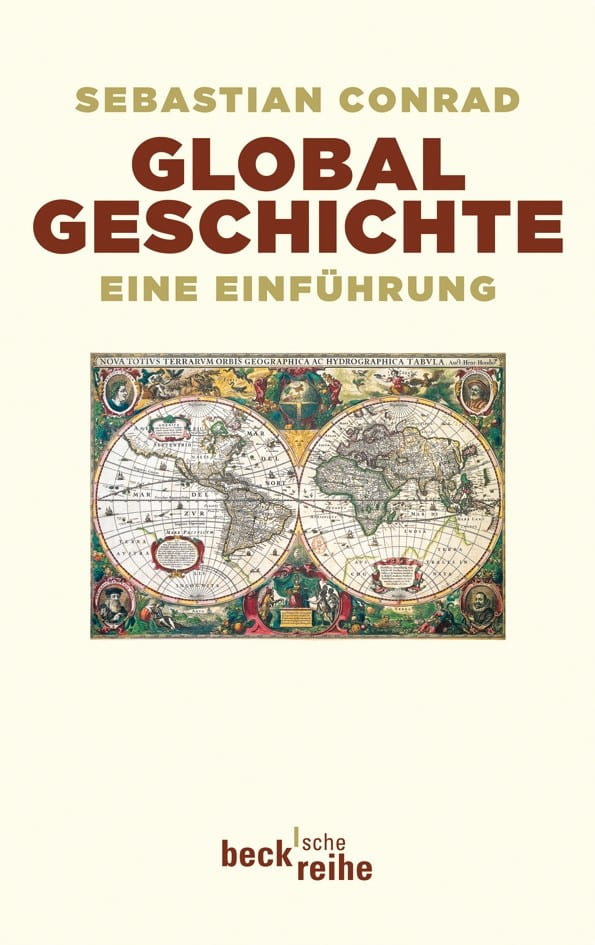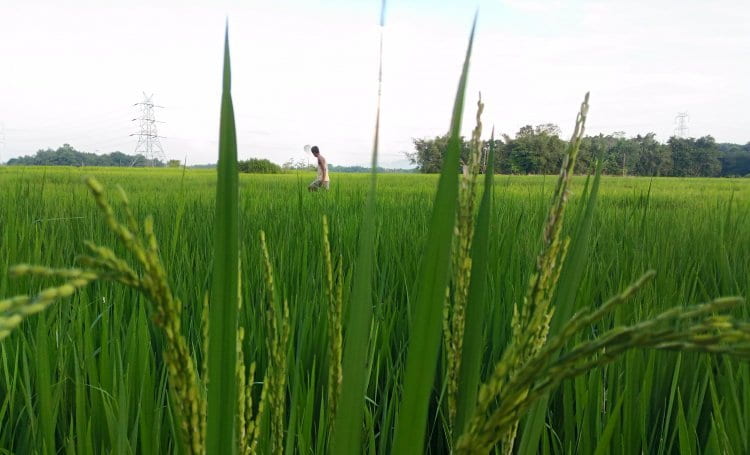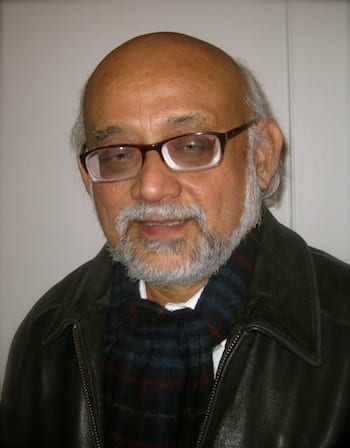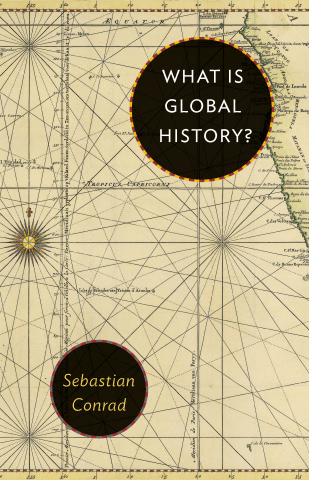By Daoud Jackson
The diverse chapters of Sebastian Conrad’s tightly structured book, What is Global History? do an excellent job capturing some of the essential eclecticism of the field of Global History in its current state. Having myself recently completed a degree in Global and Imperial History, Conrad’s book is the sort of guide which would have been invaluable as a student.

What is Global History? was originally planned as a translation of his book Globalgeschichte: eine Einführung (Munich: C. H. Beck, 2013). In his acknowledgements, Conrad explains the significance of the changes he has made from his German introduction to the field. From that edition, only two heavily edited chapters survived, a testament, he argues, to how rapidly moving the field is. Equally, however, the need for such serious changes and the adoption of what he calls a “problem-oriented approach” is a response to the sprawling nature of the field. The way in which Conrad structures these responses is not revolutionary but makes thematic sense. After a chapter which seeks to delineate the particular niche in which Global History has been developed, Conrad deals confidently with the integration of structures, space, time, and their relationships with Global History, before ending with a chapter looking at Nelson Goodman’s concept of “world-making” and some of the subsidiary issues it creates for a global historian. Throughout these chapters, Conrad is compelling in his own approach to defining the problems faced by “Global History,” even as he introduces the newcomer to the field to the views of earlier historians. By defining his account of Global History alongside the work of its critics, Conrad shows a deft touch, guiding the reader through a vexed field, rather than simply producing a polemical statement of the discipline’s utility.

Conrad’s pattern of engagement struck a real chord in terms of the ease with which a student of history might use it to shape work in the realm of global history. My own research—on the relationship between tea and rice cultivation in Assam—would certainly benefit from a connection to the global history of the present moment, and certainly could have been studied in the era before Global History. In this sort of case, Conrad’s “problem-oriented approach” has the clearest utility, in so far as it acknowledges that the adoption of Global History needn’t be universal, and shows how scholars like Kenneth Pomeranz have responded to particular problems of broader historical currency. Conversely, while thinkers like James C. Scott are natural interlocutors in writing about a rural area like Assam, the perspectives of scholars like Nelson Goodman are clearly relevant, but less thoroughly utilized than they ought to be. Conrad’s approach provides a vital impetus in that regard.

One slight weakness of Conrad’s book is that as he revels in the carnivalesque brightness of the field of global history, he does little to acknowledge the essentially apophatic foundation on which it rests. It seems to me that the slightly disparate strands of Global History presented in What is Global History? are most clearly linked in their shared opposition to historiographic insularity and myopia. Conrad discusses arguments like those of Partha Chatterjee in Chapter 4, but does little to link these strands of dissent into a broader discussion of what has constituted and constitutes “Global History.” This doesn’t affect the utility of Conrad’s book as an overarching account, nor does it compromise the rigor with which he tackles the task of encapsulating the various facets of so disparate a field, but it does mean that “Global History” is here essentially defined exhaustively, by explaining and summarizing almost all of the possible forms which Global History has taken, rather than providing a single positive or negative statement of the field. If he succeeds where others have failed—by picking one facet of a multiplicious field as the sole correct answer—he does not explore the commonalities between global historical approaches and what their emergence means for the historical field writ large as fully as he might.
The most challenging chapter of What is Global History? is probably Chapter 7, which deals with the issue of time. Conrad confronts the issue of time head-on and flags the potential complications that emerge from expanding the scope of traditional histories— a prime example of where his self-stated “problem-oriented approach” is most clearly mandated. On the other hand, the chapter itself takes perhaps an over-generous interpretation of where “Global History” lies, in drawing in the work of Jared Diamond and David Christian. Where Conrad falls short, in a sense, is in recognizing that the discipline has not yet expanded itself sufficiently to confront these problems; in my opinion, some of the problems which Conrad highlights have been neither confronted nor solved: a thinker of Conrad’s profound capacities would perhaps be better served in suggesting directions for future travel, rather than striving to maintain his book simply as a summary of past work.
These shortcomings of the Global Historical discipline bear a real significance for some of my past research and the future research of others. Having confronted historical problems that spanned both the uplands of South and South-East Asia and explored the relationship between Awadh in northern India and Karbala on the southwest coast, the focus on timescales can sometimes become subsidiary when a clear emphasis is placed on geography. One of the great benefits of the Global Historical approach in this regard is that it allows us to deal with the issues presented across time and geography synchronously. Having reached the conclusion, for example, that the pattern of agricultural development in Assam in the early 20th century had similarities with those in Bengal in the early 19th century, the impetus to draw relationships between a region at different times and between different regions aids historical understanding. At the same time, as we as historians try to unite regions of the globe that haven’t traditionally been linked in historiography, the challenge of synchronizing time periods and making them coherent is especially valuable—a problem Conrad himself has influentially tackled.
Conrad’s summarizing approach is most effective in meeting the challenge of including all of the major figures in what is unquestionably a nebulous field, seemingly without ever straining too greatly to incorporate them into the story he seeks to tell. As a short book that manages to reference all of the great names of Global History, Conrad’s book is unmatched. The eighth chapter, which deals with positionality, exemplifies Conrad’s skill in combining key thinkers into a coherent perspective, first outlining the basic problem before entering into his own argument, making sure to mention key figures like Dipesh Chakrabarty without engulfing a reader new to the field with an immersion in the texts, and keeping the focus on the key issues of the field.
One of the most interesting conclusions Conrad reaches in What is Global History? is that, ultimately, the successful adoption of the maxims of the project of Global History may well lead to the abandonment of the term “global” entirely. In ending on this note, Conrad chooses to emphasize the key methodological aim of Global History as a transformation of the geographical frames which structure the problems of history. Much of the rest of the book should be understood in this light; for Conrad, the primary shift is to change the geographical lens which historians use, in favor of one which more closely aligns with the realities of the problems they are facing. Further changes in perspective or time period are in some sense a consequences of this foundational shift, adjustments needed to maintain an internal coherence. This perspective, and the book as a whole, are to be highly recommended, as both a spur to action and as a work of reference.
Daoud Jackson received a B.A. in History and an M.St. in Global and Imperial History from the University of Oxford.




4 Pingbacks